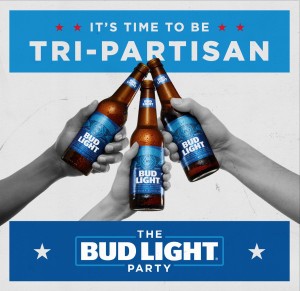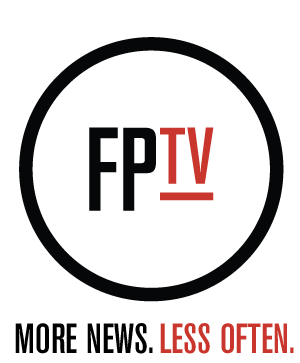New World: An Interview with Bret Shirley
Bret Shirley, “Citizens” (detail)
Houston-based artist Bret Shirley has garnered a reputation for regularly producing inspiring and innovative works. Having shown works at venues across Houston, including galleryHOMELAND, Cardoza Fine Art and the Blaffer Art Museum‘s Window Into Houston, Shirley has become well known for utilizing rather unorthodox materials and processes in his art making. Prior to his upcoming solo exhibition, New World, which opens at Cardoza Fine Art on December 9, Free Press Houston was able to catch up with the artist about his inspiration, new works, and creative process.
Free Press Houston: How did you begin using crystals in your work?
Bret Shirley: That came from being interested in where a lot of actual pigment came from and a lot of it’s mineral based. So I just started messing around with minerals and remembered 7th grade science, rock candy growing, and just how bright some of the colors in some of these minerals were. “What can you make crystals out of?” It wasn’t just that they were crystals, it was more like how do you use minerals as a color and they all generally take a crystalline form. It’s a nice bonus that crystals are beautiful, that people are interested in them. Then I started growing larger crystals, in a more sculptural sense, and then became interested in using minerals as a pigment for painting. That’s where the actual crystal paintings came from. I underpaint the crystal paintings with something like silver spray paint or I silver leaf them, but then I use different solutions of mineral to get the actual color values within the paintings. It just came from how we get color.
The performative aspect that the crystal paintings have, that I’m not involved in, really intrigues me. That I set them into their environments to grow and don’t have much control over what they do. I mean, I have techniques that I can use to try to get this result or this result, but the idea that I’m sort of out of control is really nice and really cathartic. It is what it is. I mean, I can start over many, many times to make it what I want, but it’s this natural process that I don’t have control over and that’s really interesting to me. The painting is performing while it’s making itself.
Bret Shirley, “Myth Science and Astro Infinity”
FPH: In that vein, while many of your works in the past have included the use of crystals, this exhibition also includes paintings. How much of a departure is that for you and how did you decide to choose that process?
Shirley: I don’t think it was much of a departure, I think it was a natural progression. The crystal paintings — I call them crystal paintings because I view them as paintings. I think if you go to art school you’re sort of told — especially if you’re not a painting major — that you’re not allowed to paint, at least in my own experience. I sort of came up through the institution, went to the right schools, whatever, but if you’re a photo major or a sculpture major or design major, how dare you even approach painting. It’s this sacred form, this sacred mode of production, that only painters are allowed to achieve or dabble in. I never made work before the crystal paintings that was universally accepted as beautiful, so making these beautiful pieces kind of opened me up to being like, “Oh, I can make other things that are beautiful.” It didn’t make painting any less iconic to me, it just sort of broke down this wall that was between me and actual painting. The crystal paintings made it okay for me to start painting with paint. All of these new paintings are still very mechanical in process, there’s still not a lot of human hand. I still think they’re paintings. That’s always been in my head since school. “How dare you approach painting? You’re not a painter. Don’t paint, don’t try.” Which I think is fucking stupid. Are sculptors allowed to tell sculptors not to sculpt? So, it didn’t feel like a departure for me, it felt like the next move. I like doing the crystal paintings and I continue to love making them, but they sort of made it okay to make work that was more related to painting than sculptural work. That sort of just broke down this barrier in my head, maybe it’s just me, that you’re not allowed to paint. I have a lot of friends who are really good painters and it’s really intimidating. So yeah, I don’t think it’s a departure, I think it’s a natural progression of where this work is going. I see the crystal paintings and these new leaf paintings as wholly related.
FPH: How has your perspective on the creative process changed over time?
Shirley: It’s gotten more intense and less intimidating. For a long time after being in school I didn’t make much visual art. I was in bands for a long time and I enjoyed that. That really helped with getting the sort of creative outlet I needed, but that was also partially because I had this stupid notion of — going back to painting — of art being this thing that you aspire to, that it’s this thing up on a pedestal. “Oh, you get to be an artist.” You get to be. It’s this privilege that everyone wants to achieve for this status, everyone wants to achieve being an artist. I think that even a few years ago I was still kind of looking towards that. That’s sort of shattered now. I think art is really important, especially to me, obviously, but I think that we as a people in general, in Western culture, put too much cache on art. It’s a little too holy, a little too reverent, and not reverent in the ways of painting the Pietà or baby Jesus or anything, but reverent as in, “Oh, it’s art, we can only look at it in this white cube or through the window.” I think the creative process is changed in that I’m a lot more comfortable working in the world of making art now, at least in my own world. I’m holed up in this warehouse by myself for 10 hours a day, going through my thoughts. I’m maybe less critical of myself, less critical of my desire to make art. It was always kind of like, “Do I deserve to make art?” Even when I was in school, too, I had these questions. I had pieces about it. “Do I deserve to make art?” I need to be validated somehow in my art making, and now that doesn’t really exist. I make things and I hope that people like them, that would be great, but if not, whatever. It’s in the same way that making the crystal paintings broke down this wall of painting being this thing that you have to aspire to, all of that has broken down art making in the same way.
I think the creative process has changed in the last few years, in that — I’m not jaded — but the unnecessary romanticism is gone. I still get butterflies when I make a piece that I’m really happy with. “Oh, holy shit, this piece is awesome, I’m so excited.” It makes me feel really good, and even if no one else likes it, or no one ever even sees it, it still really helps me get through my day. I think a few years ago I was way more concerned with my right to feel that. Now I don’t fucking care.
Bret Shirley, “Citizens”
FPH: You’ve been working with Cardoza Fine Art for some time now. Has having a steady gallerist helped you creatively?
Shirley: It’s been really wonderful. I think four or five years ago, when Pablo [Cardoza] really started the gallery, he asked me if I wanted to show. I hadn’t really shown outside of small drawings and big group shows in probably seven years, and I hadn’t made any work with that in mind. He was just like, “Bret, you should have a show.” I was like, “I don’t know,” but he said, “No, just have a show. It’s this date, it’s your show.” That got me making work again, which I’m always thankful for. But then again, Pablo is a pretty unique gallerist in that his background isn’t in the art world. He’s learned how to navigate it and learned how to talk about it while he’s been working in it. It also give him a unique perspective and a certain trust of his artists to do whatever they want. Pablo comes [to my studio] pretty regularly just to hang out and he sees the work as it’s moving along, but even this new body of work, he didn’t see most of it until it was done. We even talked about it. I was like, “It’s a little weird that I have a show at your place in a few weeks and you haven’t seen most of it.” He just said, “No, I trust that you’ll do it well.” That’s the kind of gallerist/artist relationship that fosters making good art. Pablo allows the artists that he works with to really experiment within their own comfort zones. I think that results in some different kinds of shows happening within one person’s vision, Pablo’s curatorial vision, but we’re not all the same artist and we’re all encouraged to make the work that you’re proud of showing. It’s good. The fact that Pablo’s going to the art fairs, which, you know, a lot of people love art fairs, a lot of people hate art fairs. I don’t even want to call them a necessary evil because I don’t think that either is true, but they are part of the art economy now. He goes to them and it’s a great opportunity for artists from Houston — ones that he’s taking to Miami, New York or even the art fairs in Houston — to get a new kind of audience that wouldn’t normally come to Cardoza [Fine Art]. You can’t rely on having a show every two years to sell your work. If you work as a full-time artist, that’s just not how it works. That he goes to fairs is a really, really nice addition that also keeps me working heavily.
I know of and have worked with gallerists who don’t give you any freedom, so it’s not just having a gallery that’s put me where I am, it’s having a gallery that is specifically the people that I’m working with. Every artist and every gallerist are going to give you different answers.
FPH: How do you see your work evolving?
Shirley: I think my work is evolving right now. I think that every time I have a show, I’m really proud of it, but think, “Man, had I worked on that show a little harder it would have been this.” And then that becomes the study for the next show, and so on and so on. I think working with more materials and in larger, more experimental formats is where I want to go. I’ve been fortunate enough to be able to have a full-time art career now and it’s really nice to be able to spend 50 hours a week in the studio; it gives me time to experiment. That’s also just the kind of artist I am, I want to always move forward. I guess it’s also problematic because I get tired of something after a year and a half of doing it. “Well, I don’t want to make those anymore.” But that’s what I want to make. I think I’ll probably make more of these leaf paintings and keep working in sculpture, but I have a few large scale projects in mind that, if I had the resources, I’d like to realize. I’ve always felt like — maybe this comes from being in bands — “Don’t make pieces, make shows.” It’s like, “Don’t make songs, make albums.” I have more shows in my head that I’ll start on the week after this next one opens. I’ll take a week off, reset the studio, and then on to the next thing.
Bret Shirley’s “New World” features an opening reception at Cardoza Fine Art (805A William St.) on Friday, December 9 from 7 to 10 pm. The exhibition will be on view through January 15, 2026.













